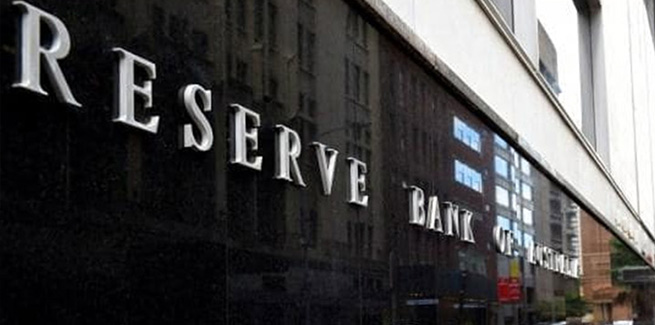The Reserve Bank of Australia (RBA) has maintained the official cash decision at its current record low of 0.1 per cent, in line with its prior stance that it would not raise rates until inflation targets are met and wage growth picks up.
The last rate movement took place in November, when the RBA slashed it from 0.25 per cent and started broad quantitative easing.
RBA governor Philip Lowe also repeated his previous stance, that the cash rate will be kept at its current level until inflation hits the board’s target range of 2 to 3 per cent – which is not expected until 2024.
“Meeting this central scenario will require the labour target to be tight enough to generate wages growth that is materially higher than it is currently,” Dr Lowe said.
The board will also proceed with its plans to taper its weekly rate of bond purchases from $5 billion to $4 billion, despite speculation from some of the major banks that predicted it would deviate.
However, the bond purchase program has been extended until mid-February, with the board committing to ongoing reviews. Previously, it had indicated that it was going to review the program in November.
Dr Lowe stated the decision “reflects the delay in the economic recovery and the increased uncertainty associated with the Delta outbreak”.
The RBA board has also decided to maintain its April 2024 Australian government bond yield target of 10 basis points.
After GDP grew by 0.7 per cent in the June quarter and by nearly 10 per cent of the year, it is expected to decline materially in the September quarter. Unemployment, which fell below 5 per cent in June, is tipped to move higher over the coming months.
However, the current Delta outbreak and its associated lockdowns are only expected to be a temporary setback or delay for Australia’s economy, Dr Lowe stated, amid increasing vaccination levels.
“There is, however, uncertainty about the timing and pace of this bounce-back and it is likely to be slower than that earlier in the year,” he noted in his statement on the rate decision.
“Much will depend on the health situation and the easing of restrictions on activity. In our central scenario, the economy will be growing again in the December quarter and is expected to be back around its pre-Delta path in the second half of the year.”
Lockdowns impacting the housing market
The Reserve Bank has forecast a continued rebound in 2022, underpinned by accommodative policy settings and strong business and household balance sheets. However, both wages growth and inflation are expected to experience a gradual and modest pickup.
Further, the RBA has been watching the housing market as previously indicated, with its governor recording a continued rise in prices amid a turnover in some markets following the outbreak.
“Housing credit growth has picked up due to stronger demand for credit by both owner-occupiers and investors,” Dr Lowe reported.
“Given the environment of rising housing prices and low interest rates, the bank is monitoring trends in housing borrowing carefully and it is important that lending standards are maintained.”
Mortgage Choice and Smartline chief executive Susan Mitchell stated the lockdowns across Sydney and Melbourne are likely to place downward pressure on an “already constrained supply this spring housing season”.
Meanwhile, the uncertainty has seen borrowers seek better deals on their home loans, she said.
“Loan preference data is showing that borrowers are seeking certainty in their monthly home loan payments,” Ms Mitchell said.
“Mortgage Choice monthly approval data reveals a growing trend towards fixed rates, with the proportion of borrowers opting to fix part of their mortgage steadily increasing throughout 2021. In August, 41 per cent of all loans approved had a fixed component.
“Mortgage Choice home loan approval data shows a growing trend towards refinancing since March this year, with 42 per cent of loans for the purpose of refinancing – this is slightly higher than 12 months ago where 41 per cent of loans were for the purpose of refinancing.”
Recent Australian Bureau of Statistics showed refinancing reached a high in July, with loan commitments exceeding $17 billion.
Realestate.com.au economist Paul Ryan noted sellers have been reluctant to list their homes when they can’t have a “proper selling campaign and viewing inspections” through the lockdowns in Sydney and Melbourne, resulting in a drop in activity.
“While COVID-19 restrictions remain in place, housing market activity will continue to be subdued, but I see this as only a delay. So it’s a pause rather than a hibernation,” he said.
John Kolenda, managing director of mortgage aggregator Finsure stated rates will remain on hold for the next two quarters, at least until there is more clarity around how the economy performed in the first half of the year.
He expects that once vaccination hits a certain level and lockdowns ease, there should be a strong rebound in certain sectors.
“The real estate industry, in particular, will see a strong rebound once lockdowns ease with many more listings hitting the market and a surge of interest from buyers starved of choice,” Mr Kolenda said.
“But some industries such as tourism and hospitality will take longer to bounce back, while unfortunately some businesses may not recover.”
Dr Lowe has previously insisted that the cash rate has hit its ultimate lowest point and will not enter negative territory.
However, APRA told the banks to prepare for zero and negative interest rates in July.
[Related: RBNZ consults on mortgage lending limit]
 ;
;
